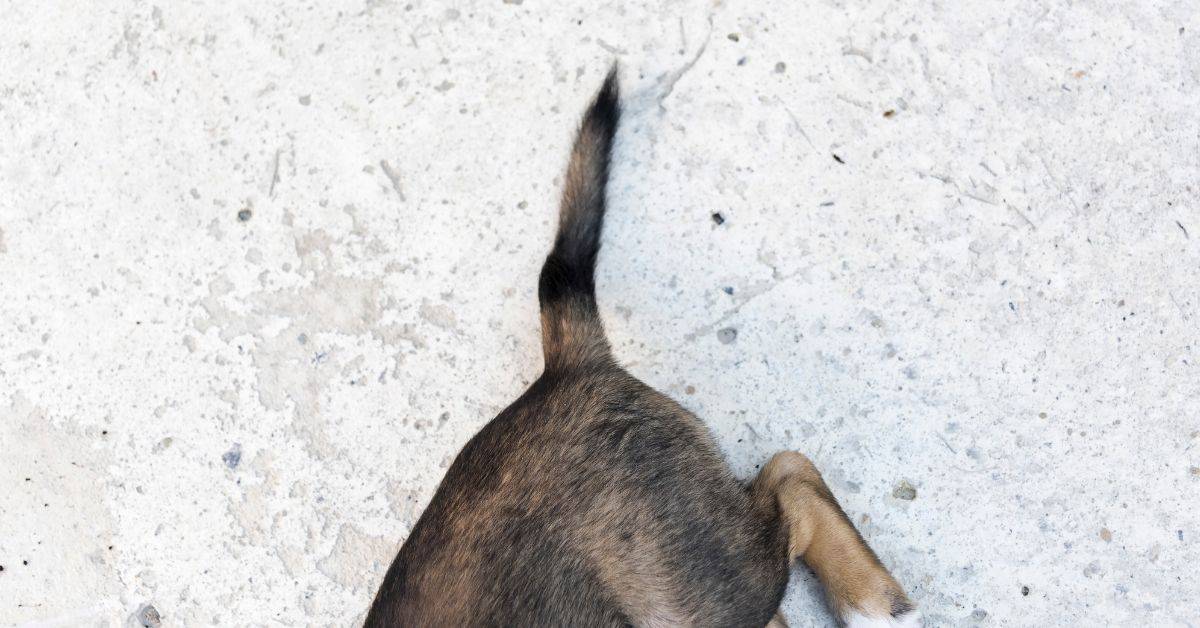Imagine unlocking the secret language of your canine companion, being able to understand their feelings and desires just by observing the subtle movement of their tail.
This is more than a fanciful wish—it’s a tangible skill that can drastically enhance your bond with your furry friend.
Your dog’s tail is more than a cute appendage; it’s a powerful communication tool.
Understanding this ‘tail talk’ is not only fascinating—it’s crucial for pet parents eager to deepen their connection with their pets.
In the upcoming lines, we’ll embark on a journey to decipher the hidden meanings behind every wag, twitch, and tail position, to better communicate with and understand our beloved companions.
Quick Overview Of The Dog’s Tail And Its Purpose
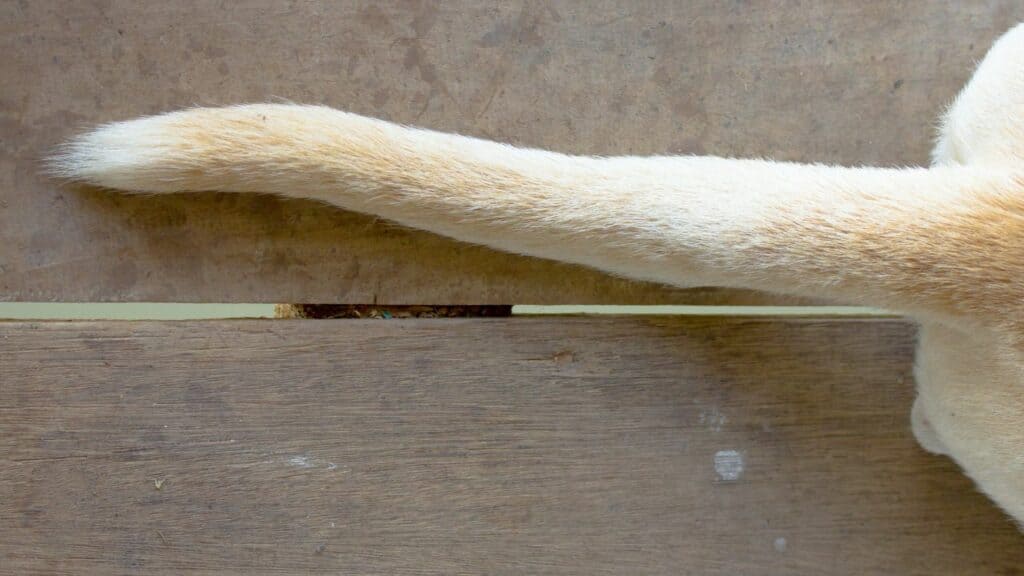
The tail is an extension of a dog’s backbone, possessing an intricate system of muscles, nerves, and bones.
Aside from aiding in physical balance, the tail plays a vital role in communication, expressing a variety of emotions ranging from happiness to fear and aggression to relaxation.
Anatomy Of A Dog’s Tail
The Structural Anatomy Of A Dog’s Tail
The dog’s tail, also known as the caudal or coccygeal vertebrae, typically comprises between six to twenty-three individual vertebrae.
These vertebrae are surrounded by muscles that provide mobility, allowing the tail to move in various ways.
Some tails are long and whip-like, while others might be curled or even bobbed.
The nerves in the tail contribute to its highly expressive nature.
Different Tail Types And Breeds
Interestingly, the tail’s shape and size can vary dramatically among different breeds.
For instance, Greyhounds have thin, whip-like tails, while Pugs sport curly ones.
Retrievers have thick tails covered in lush fur, often referred to as a “feather tail,” while Bulldogs have short, straight tails.
Each breed’s tail characteristics can influence how tail signals are conveyed and interpreted.
It’s crucial to understand that breeds with very shortened tails can struggle with effective communication, potentially leading to difficulties in interactions with other dogs due to their limited ability to signal appropriately.
Therefore, being cognizant of these differences is essential when trying to understand your furry friend’s communication attempts.
The Language Of The Tail

The position of your dog’s tail can convey different emotions and intentions.
High Position
A high tail often signifies confidence or dominance.
If the tail is straight up or curved over the back, and the dog’s body language is relaxed, it usually indicates a happy, comfortable dog.
However, a stiff, high tail can also signal aggression.
Neutral Position
A tail in a neutral position, which varies by breed but is generally halfway between high and low, indicates a relaxed and content dog.
Low Position
A low tail, extended straight out or slightly down, suggests uncertainty or mild anxiety.
This position could mean your dog is unsure about a situation and is waiting to see how things develop.
Tucked Position
A tail tucked between the legs is a clear sign of fear, submission, or discomfort.
It’s often seen when the dog is trying to make itself appear smaller to avoid confrontation or during moments of extreme anxiety or fear.
The Speed And Direction Of The Tail Wag
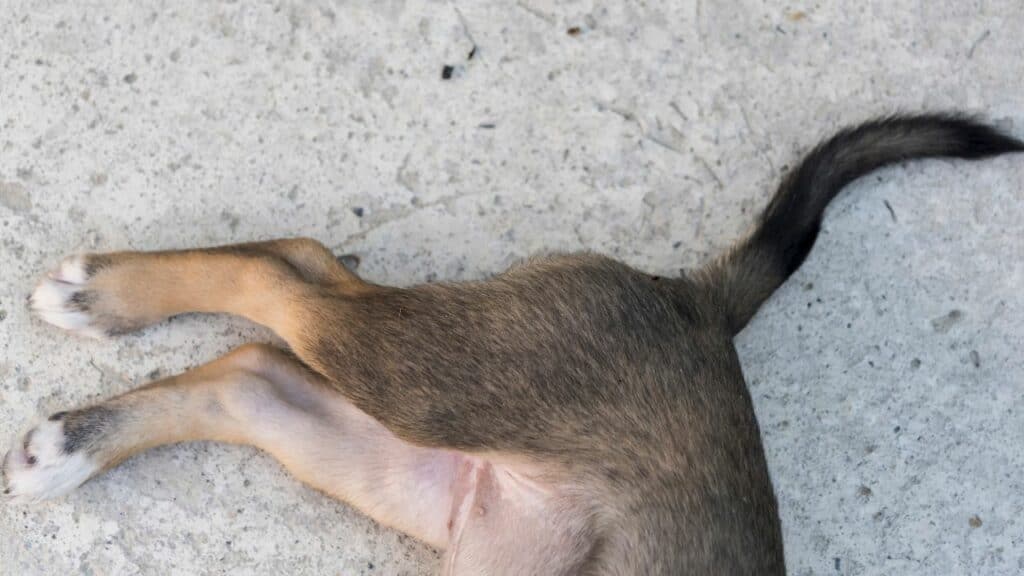
The wagging of a dog’s tail isn’t just a sign of happiness.
The speed and direction can give more specific clues about their mood.
Fast Wagging
A fast-wagging tail, especially if the rest of the body is still, can show excitement.
However, if the tail is high and wagging quickly, it may signal aggression.
Slow Wagging
A slow wag usually means your dog is unsure about a situation.
It’s a cautious signal as they figure out what to do next.
Wagging To The Right
Research suggests that if your dog wags its tail more to the right side of its body, it’s likely feeling positive emotions such as happiness or excitement.
Wagging To The Left
Conversely, if the tail wags more to the left, it could mean the dog is experiencing negative emotions like anxiety or uncertainty.
Tail Movements In Different Scenarios
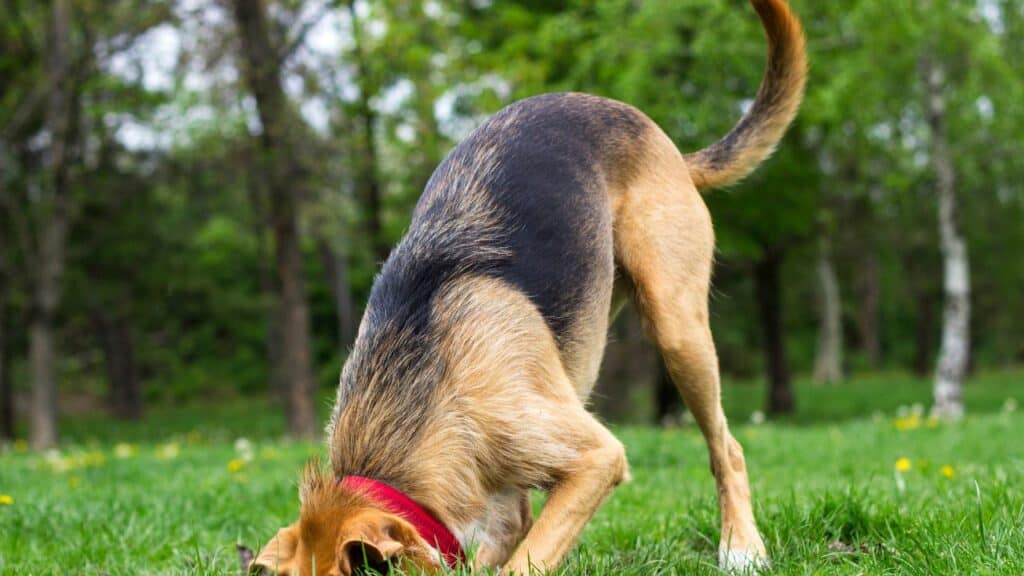
Greeting Humans And Other Animals
When greeting people or other animals, a rapid, broad wag of the tail that extends to the body (‘full body wag’) usually signifies friendliness and excitement.
During Playtime
During play, dogs often exhibit a playful wag characterized by a relaxed, side-to-side motion.
This signal suggests that any rough behavior just plays and is not intended as aggression.
In Threatening Situations
In threatening situations, a dog might hold its tail high and stiff, possibly wagging it slowly and minimally.
This is a sign of alertness and potential aggression, demonstrating that the dog is prepared to defend itself if needed.
In Anxious Or Fearful Situations
When a dog is anxious or fearful, its tail will likely be tucked under its body.
Some dogs may even wag their tails while tucked, which is a sign of extreme fear or submission rather than joy.
What To Do If Your Dog’s Tail Behaviour Changes
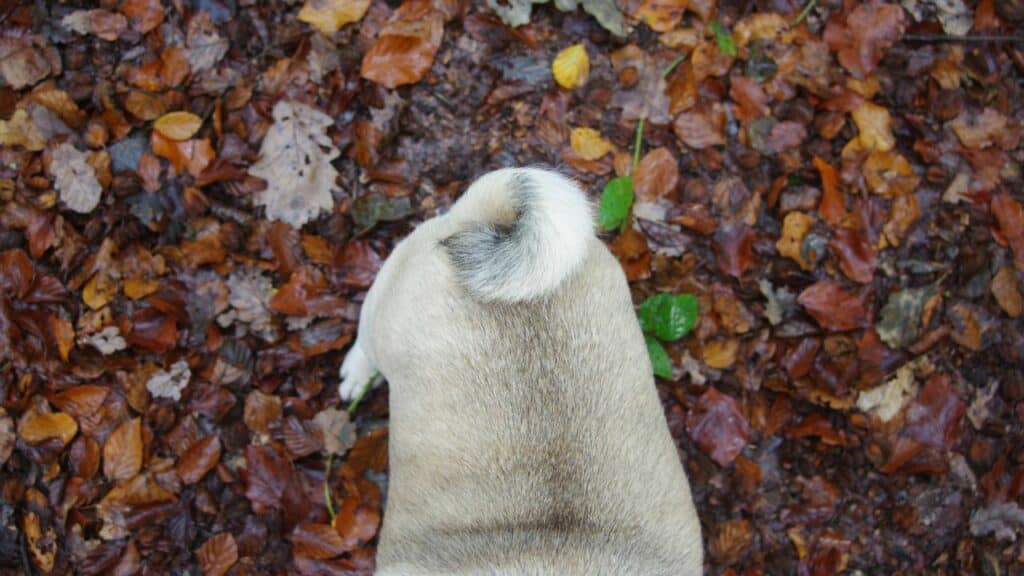
Changes in your dog’s tail movements can be an indicator of health issues.
A tail that’s held lower than usual moves less or not at all might suggest physical discomfort or injury.
Also, if your dog is chasing or biting its tail excessively, it may be due to various health problems, including parasites, allergies, or anxiety.
When To Seek Veterinary Help
It’s crucial to seek veterinary assistance if you notice any significant changes in your dog’s tail behavior, especially if it’s coupled with other symptoms like lethargy, changes in appetite, or unusual aggression.
Some conditions like “limber tail” or “cold tail” can cause severe pain and require medical attention.
Treatment And Care For Tail-Related Health Issues

Treatment for tail-related health issues depends on the underlying cause.
Physical injuries might require rest, pain management, or even surgery in severe cases.
For problems related to stress or anxiety, behavioral therapy, environmental changes, and sometimes medication may be advised.
The Role Of The Tail In Dog Communication
The Tail And Scent Communication
The dog’s tail also plays a significant role in scent communication.
As the tail wags, it helps disperse the scents from the anal glands, which carry a lot of information about the dog’s identity and reproductive status.
This is another reason why dogs sniff each other’s rear ends during their initial encounter.
How Other Dogs Interpret Tail Signals
Dogs are expert interpreters of tail signals.
For example, a submissive dog might lower its tail in response to another dog’s high, stiff tail wag, which is a sign of dominance.
By understanding these signals, dogs can interact appropriately and prevent unnecessary conflicts.
Beyond The Tail: Other Aspects Of Canine Body Language

Facial Expressions And Ears
Just like the tail, a dog’s facial expressions, and ear positions also convey crucial information about their emotional state.
Relaxed ears usually mean a content dog, while pinned-back ears might signify fear or aggression.
Similarly, a soft gaze and relaxed mouth indicate a happy dog, whereas a hard stare and bared teeth suggest threat or aggression.
Body Posture And Movement
A dog’s body posture and movement contribute significantly to its overall body language.
A playful bow, for instance, invites play, while a tense, low posture could suggest fear or submission.
Observing your dog’s body in conjunction with tail behavior provides a fuller picture of its emotional state.
In conclusion, understanding your dog’s tail and body language can significantly enhance your relationship with your pet.
It not only allows you to gauge their emotions accurately, but also enables you to detect potential health issues early on.
Taking the time to learn about these behaviors is undoubtedly worth the effort and will help you provide the best possible care for your canine companion.
Before You Go…
If you want to learn more, watch the following video.

